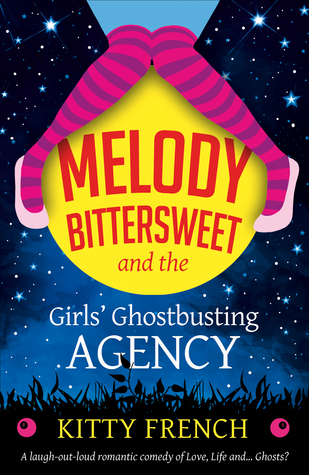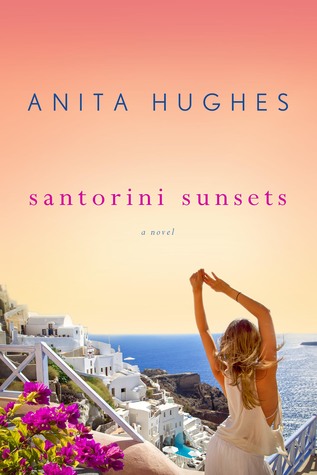by Chris
I’ve been writing for an awfully long time. I remember drawing comics with no words before I really knew what a book was, trying my infantile best to tell stories in the only way I knew how. As I grew up, this matured into short stories, novellas, and—after a lengthy period of focusing on music composition—full-length novels. Throughout all this time, I’ve often wondered at the best way to sit down and write that first draft, particularly when my school teachers would insist I do it their way, despite my protestations that I really was better at typing than handwriting.
The first story I have any solid recollection of was a sort of fictional retelling of the Luistania disaster: an enormous, beautiful cruise liner torpedoed by a submarine and sunk with almost all aboard perishing (now that I think about it, my stories were pretty dark even then). I was living in Switzerland at the time and wrote it for class at the local grade school, so although I remember drafting certain parts in English, the majority of it was written in French. I wrote it all out by hand in a cahier, a pink-covered lined notebook that all my literary compositions went into. It took hours upon hours to complete, and when I handed it in and saw it come back covered in Monsieur Bertrand’s red-inked scribbles, I re-wrote it all out again, corrections and rewrites and all.
Later in my youth, I remember writing Star Trek fan fiction (in fact, I still have a copy that my mother lovingly printed and bound for me) on a computer (I was past the age of typewriters by this point), using a primitive version of Microsoft Office. At first this was painfully slow, but it ultimately taught me to type, and the last of the four books flew out from my fingers. I loved the ability to go back and correct typos, editing to my heart’s content without worrying about the flow of pages.
Ultimately, when it came time for me to try my hand at writing professionally, things had moved on rapidly, and along with advances in technology came advances in writing software, and so I purchased a computer program called Scrivener that claimed to be the Photoshop of writing (or something), and I’ve never looked back.
Writing by Hand
Throughout my teens and well into my adulthood, I kept long-running diaries in a series of notebooks, chronicling my ups and downs, joys and fears, furies and depressions. There was a lot for me to talk about, and these journals weren’t typical ‘Dear Diary’-style entries. Full of piss and vinegar, many of them were nothing more than long, drawn-out tirades against my parents, society, and the world in general. Like many young adults, I think, I struggled to come to terms with myself, where I fit in the world, and what purpose I could drag out of my wretched existence. I was very insular, and rarely talked to anyone; I remember going to therapy once and simply falling asleep for the entire session.
But these written documents, painfully scratched out by hand, were my true therapy. They allowed me to focus my anger and despair, channel it onto the page, and exorcise my demons. There is something uniquely intimate about writing by hand, and to this day if I need to write a deeply personal letter, or just to work something out in my own head, I will typically write it in my own handwriting. If you’re anything like me, you probably think faster than you type, and type faster than you write. This deliberately slow pace forces the writer to think carefully about what they intend to say; verbosity becomes greatly reduced as the hand weakens and tires, and you begin to realize that conciseness is the key to preventing cramp.
I remember this from my early childhood stories. I wanted them to be lengthy, I wanted them to be full-length novels, and they certainly felt that way when I was done. In truth, they would amount to probably no more than three or four pages of typed text. A page, handwritten, contains probably half the words (if that) of a page typed, but takes twice as long and disproportionately more effort. There is something genuinely satisfying about looking back over pages of handwritten notes, knowing the deliberate thought that went into it.
There are drawbacks, however, to writing by hand as well, and this pacing, so useful for being concise, turns into a double-edged sword when making attempts at lengthier prose. My first novel clocked in at around 103,000 words; the sequel is nearly 125,000. (Book three is already at 80,000, and is only just half complete.) I can’t realistically imagine writing that much by hand—especially knowing that it would have to be retyped again anyway, if for nothing other than publishing, never mind the editing process.
I don’t know how authors like Charles Dickens wrote the length of stories they did. Realistically, I can’t quite grasp the concept of writing with a typewriter, knowing that an extra paragraph on page one would affect the pagination for the rest of the entire book. I’m glad to be working in a time of non-linear editors, where I can add or remove entire chapters without worrying about the flow and impact on the rest of the document. But I can’t deny that writing by hand has its advantages, despite the shortcomings that it also entails. It’s a shame kids these days aren’t taught handwriting as much as they used to be.
Word Processors
Computers have undoubtedly changed the writing landscape forever. Typing before that was fantastic for creating easy-to-read documents at a rapid pace, and of course we owe this, going far enough back, to the invention of the printing press in the 1400s. If Gutenberg’s printing devices revolutionized the read word (allowed documents to be disseminated en masse), the personal computer revolutionized the written word, allowing anyone and everyone to type documents rapidly and without fear of making mistakes.
While the history of the word processor can be traced all the way back to a program called ‘Bravo’, developed by Xerox, the true dawn of personal word processing was with a partnership between Microsoft and Apple, allowing the then-prototypical Microsoft Word to run on the Mac operating system. The ability to manage text, undo mistakes and re-type in any order is so standard today that it becomes difficult to think just how incredible this was at the time.
I probably first started working with Microsoft Word in the early 1990s, and I distinctly remember Word 5.1 being fully-featured, although not necessarily easy-to-use or intuitive, Even by then, Microsoft were showing their penchant for adding feature after feature with little regard for how useful they are to the general population. I remember having to hunt endlessly through menus and dialog boxes just to change fonts and other basic settings, but for all of that, it allowed me to write faster and more fluidly than I had ever written before.
With such an impact on the ability of people to write, it’s easy to overlook the downsides to word processors, especially when compared with what our software technology is capable of today. Many, many authors still use Microsoft Word or its equivalents for their daily use, and it becomes clear that it isn’t always the best at everything. Bashing out words? Yes. Formatting? Probably. Non-linear editing? Moving chapters and sections around fluidly? Exporting to the numerous digital formats required today? Not so much.
Probably the biggest drawback to virtually any word processor is that their job—their primary function—is to help people write words in order, from start to finish. It’s understandable that this was all people could think of thirty-five years ago; after all, it was how things were done since time immemorial. (Well, since 1440.) But when it comes to writing, whether it be stories, novels or articles like this one, the linear process isn’t always the most effective. Sometimes you have an idea for a scene, and you just need to write that scene before anything else. Sometimes you get stuck, and want to move on to something else. Sometimes you just realize that a certain chapter works better earlier in the novel. Word processors, even advanced ones like Microsoft Word, just don’t have the capability to manage this kind of workflow.
Additionally, most word processors fall on either side of the line between feature-rich and intuitive interfaces, with very few straddling the border. Microsoft Word is a massive, blundering ogre of an application, with every feature you could imagine under the sun. Good luck if you actually need one of those features, though, because it’s unlikely you’ll be able to find it without at least a five-minute hunt. Others, like Apple’s Pages, have a simple, clean interface that, while hiding a surprising number of advanced features, lacks distinctly in areas that Microsoft dominates in (Pages can’t even create separate headers for left and right pages, an essential staple of print publication). Yet others, like Google Docs, try to take the word processing to the cloud, but woe be you whose internet goes down.
Writing Apps
The good news is, I’m not the only one to have noticed this deficit in word processing, and in recent years a whole host of dedicated apps, specialized for certain jobs, has started to appear. A quick search for the term ‘writing’ in the Mac App Store brings up things like Scrivener, iA Writer, Ulysses and Final Draft, amongst countless smaller and lesser-known applications. Each one professes to have a different speciality, like novel writing, CSS markdown, or screen writing, and many of them are very, very good at what they do.
So why would you choose one of these applications over a multifaceted word processor like Microsoft Word? Are their costs justified, and do they live up to their expectations? In general, you need to look at what each application offers, and why you would benefit from its unique feature set. For example, iA Writer (available for MacOS, iOS and Android) provides an utterly clean, simple interface with in fact very few features at all. Like Pages to Microsoft’s Word, it focuses on the writing experience at the expense of a vast array of tools. In fact, its primary selling point is that fact that, once you’re in the app, it doesn’t really do anything except write. An empty blank screen awaits you, and the focus is kept on the single sentence you’re currently writing. As soon as you press the period key, the sentence dims, allowing you to continue writing without worrying about what you just wrote. Perfect for bashing out first drafts.
Another major application, Scrivener, just released a version for iOS after years of waiting. Scrivener touts itself as a ‘complete writing studio’; I often liken it to Photoshop for images, or Premier for video. After all, why shouldn’t there be a Swiss Army Knife program for writers, when there have been the equivalents in other media for decades? Scrivener, however, is not for the faint-hearted; the interface is daunting to say the least, and contains more writing-related features than all of Microsoft’s programs combined. That being said, it is definitely a one-stop-shop when it comes to drafting, writing, editing and publishing. Everything from reorganizing chapters and sections dynamically to exporting directly as ePub and Kindle files is packed into this remarkably well-priced application. If you want a single piece of software to manage everything you will ever write, this is the program for you.
With the advent of mobile computing (not just phones and tablets, but all-day portable computers, too) and the proliferation of apps for these mobile devices, writers no longer have to contend with the Microsoft-or-die mentality that was so prevalent even just ten years ago. I started using Scrivener for my novels, and it’s what I’m currently using to write this very article. I would recommend it in a heartbeat, but with the caution that you will be taking some time to learn how to use it, first. If you want an application to just write, and nothing else, there are better apps out there for you.
Where Do We Write?
There is something inarguably Bohemian about the image of a struggling author, sitting at a typewriter in a dark, smoke-filled room knocking back whiskey in despair. (Or maybe in a cafe in Paris, I’m not sure.) That image is often in the minds of many struggling authors today, and quite a few I know personally have taken to the typewriter as a way of paying homage to the past.
I’m not one of these, though. I firmly embrace technology (perhaps to my own detriment), and believe that the portability of our devices can only aid in the writing process. Typewriters are large, clunky and cumbersome, and not easy to take with you. They root you to a desk. When personal computers replaced them, the location didn’t change—you still needed power, and a desk, and a keyboard, and all that nonsense.
When computers started becoming portable in the mid-1990s, however, people realized they could take their work with them. No longer did one have to to find a house in the midst of the Swiss Alps to find inspiration—they could literally sit on a hillside and type away.
This is more true than ever today. I personally use a desktop iMac at home, an iPad Pro when traveling, and an iPhone when neither of the other devices are accessible. This allows me to bring the Bohemian to the streets (or the hipster, as the case may be); I can write in airports, in coffee shops, and even on the train. Realistically, I usually sit and think about writing in these places more than I actually write, but the concept is there. The point is, I can work literally anywhere I want to.
And it becomes important, therefore, that I be able to take my work with me. I don’t want to carry around bundles of paper, printed documents and drafts, to review and revise in red ink, like my grade school teacher. I want to be able to touch the words digitally, or even with my very fingers. And this requires software that can synchronize seamlessly across my devices. For the longest time, this was difficult to achieve; software for desktop computers didn’t have mobile versions, and vice versa.
In fact, for a while the only real solution was to invest wholly in a single ecosystem—Apple’s software on Apple’s devices, or Google’s on theirs, but never could you use third-party software and achieve the same level of synchronization. With cloud-based services like Dropbox, Google Drive and iCloud, however, this is becoming more of a reality. Just last week, as I believe I already mentioned, Scrivener was released for iOS, syncing between MacOS and Windows versions of the same program via Dropbox. All I had to do was transfer my projects to the Dropbox cloud system, and suddenly everything I’d ever done on my Mac was right there on my iPad. So far, it’s been working brilliantly.
The ability to take our work with us is important, and only getting better. I think that in only a few years it will become natural for us to no longer consider what device we need to do what kind of work—instead, we’ll simply reach for the nearest one, and know that we can carry on precisely where we left off.
In conclusion, I think it’s important to remember where we writers came from, and what our ancestors had to struggle with. I’m lucky enough to have grown up in a generation that bridged the technology gap from pen and paper to digital creations—my son, who’s twelve, will never write a story by hand. It’s doubtful he’ll even keep a manual diary, especially since on his computer he can password-protect anything and everything he writes. I recently bought him a cute, leather-bound notebook and artisan pencil at a renaissance festival; I doubt he’ll ever use them.
But writing by hand is not just a thing of the past; it still can have benefits today, if only psychologically; there is something essential and vital about taking pen to paper. From a practicality point of view, though, there is nothing easier and more convenient than cloud-syncing apps that enable us to do our best work wherever we are, on whatever device we choose.
How about you? How do you write and draft? Do you prefer to write by hand, or do you have a favorite app of your own? Let me know in the comments!
Chris, features writer. Raised between the soaring peaks of the Swiss Alps and the dark industrialism of northern England, beauty and darkness have been twin influences on Chris' creativity since his youth. Throughout his life he has expressed this through music, art and literature, delving deep into the darkest parts of human nature, and finding the elegance therein. These themes are central to his current literary project, The Redemption of Erâth. A dark epic fantasy, it is a tale of the bitter struggle against darkness and despair, and an acknowledgement that there are some things the mind cannot overcome. Written from a depth of personal experience, Chris' words are touching and powerful, the hallmark of someone who has walked alone through the night, and welcomes the final darkness of the soul. However, for now he lives in New Jersey with his wife and eleven-year-old son. You can also find him at http://satiswrites.com
Get even more book news in your inbox by signing up for our newsletter: http://eepurl.com/mHTVL. Girl Who Reads is an Amazon advertising affiliate; a small commission is earned when purchases are made at Amazon using any Amazon links on this site. Thank you for supporting Girl Who Reads.









.png)








































